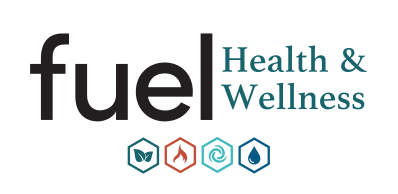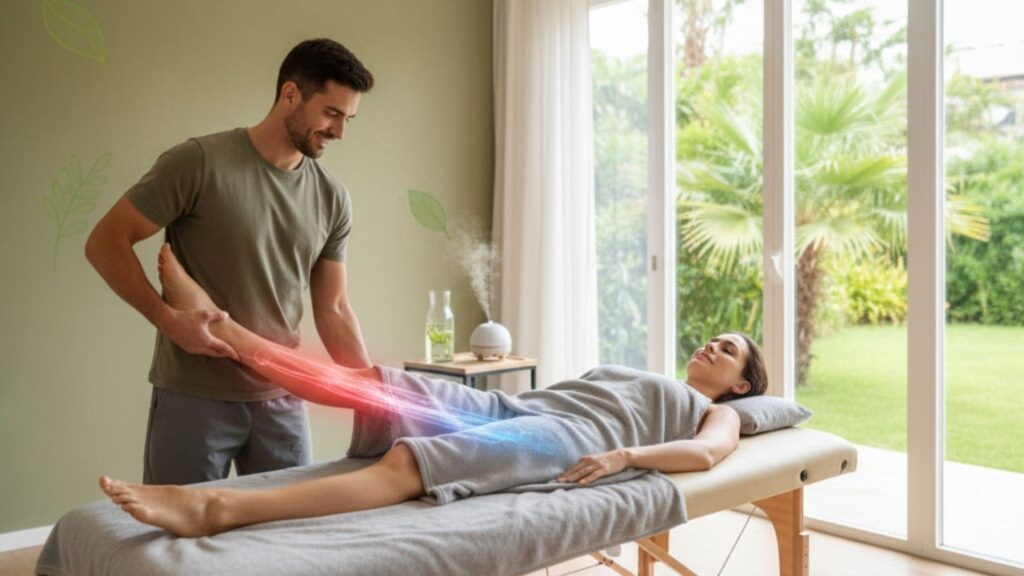In the relentless rhythm of modern life, our bodies are often caught between two extremes: the static tension of prolonged sitting and the aggressive breakdown of intense physical training. Both scenarios lead to common, underlying issues—sluggish circulation, chronic muscle tightness, and the accumulation of metabolic waste that leaves us feeling stiff, fatigued, and prone to injury. The question is, how do we effectively reset the system, achieving true systemic recovery that goes deeper than surface-level relief? The answer lies in the precise, profound science of Assisted Stretch Therapy. This professional, targeted method moves far beyond basic self-stretching, operating at a neuromuscular level to unlock hidden potential in your circulatory and lymphatic systems. It’s not just about touching your toes; it is a holistic treatment designed to flood your tissues with oxygen, sweep away toxins, and ultimately, enhance your physical longevity and well-being.
What Are the Core Physiological Mechanisms That Make Professional Assisted Stretch Therapy Superior to Self-Stretching?
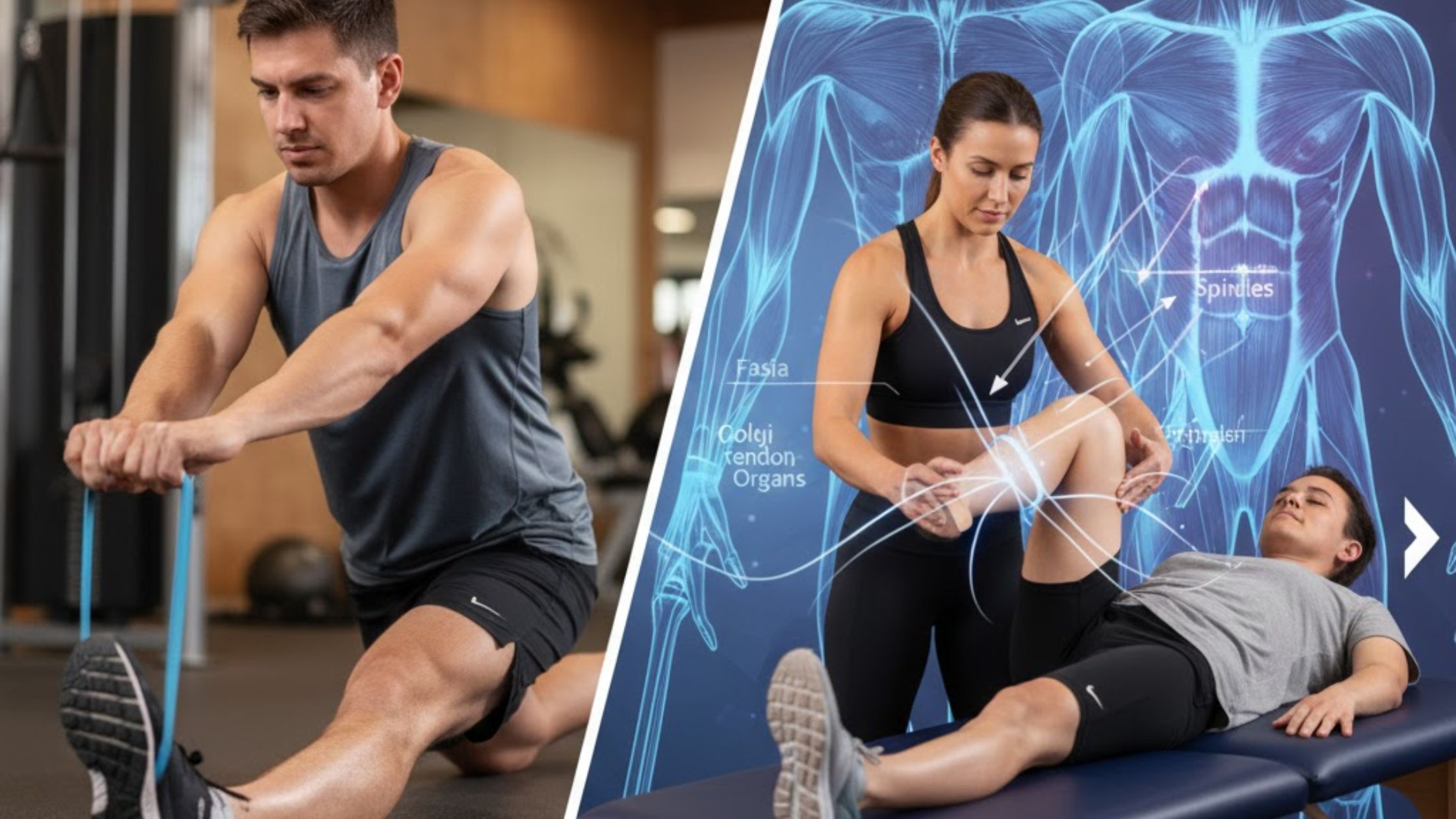
The distinction between casually pulling on a tight hamstring and engaging in a dedicated session of professional Assisted Stretch Therapy is rooted entirely in human physiology and neuromuscular science. When you attempt to stretch on your own, your central nervous system (CNS) acts as a vigilant bodyguard. If it perceives a stretch to be too deep, too fast, or potentially harmful, it immediately triggers the stretch reflex—a protective mechanism that causes the muscle to contract, effectively preventing you from achieving a true, beneficial lengthening. This involuntary defense is why solo stretching often feels like hitting a wall.
Professional stretch therapists are highly trained in communicating directly with the nervous system to bypass this protective reflex. They employ a suite of specialized techniques that leverage the body’s own neurological machinery to signal safety to the CNS. This controlled intervention allows the muscle to finally relax and elongate past the point of reflexive tension, leading to deeper, more sustainable gains in flexibility and range of motion (ROM). It is a process of neuromuscular re-education, teaching the muscle and the brain to trust the new, greater length of the tissue.
The Science of the Stretch Reflex and Neuromuscular Advantage
The most powerful tool a trained specialist uses is their in-depth understanding of the stretch reflex, which is mediated by sensory organs within the muscle called muscle spindles. When the muscle spindles detect a rapid or aggressive change in muscle length, they send a signal back to the spinal cord that commands the muscle to contract. This contraction is the reflex you feel when you “bounce” out of a deep stretch.
A skilled therapist, however, uses slow, precise, and consistent movements, often combined with respiratory cues, to inhibit this response. By gradually and gently introducing the stretch, they avoid triggering the spindle’s alarm bells. Furthermore, they are masters of applying force not just to the surface, but to the deeper, often overlooked layers of connective tissue and fascia, enabling a much more complete and productive stretch.
This controlled environment is also vital for improving proprioception. Proprioception is the body’s subtle sixth sense—the awareness of the position and movement of the body. When muscles are tight and chronically tense, the proprioceptive feedback loop becomes distorted. Through passive movement and guided resistance, a therapist sharpens this feedback, allowing the nervous system to coordinate muscle firing more precisely. This fundamental improvement in spatial awareness and control is essential for injury prevention and efficient movement patterns in all activities.
Harnessing the Power of Proprioceptive Neuromuscular Facilitation (PNF)
Proprioceptive Neuromuscular Facilitation, or PNF stretching, is one of the most scientifically validated methods in a stretch therapist’s toolkit. It fundamentally relies on the neurological principle of autogenic inhibition. PNF typically involves three key phases: a passive stretch, an isometric contraction against resistance, and a final, deeper passive stretch.
During the isometric contraction phase, the muscle being stretched is briefly and gently activated by the client against the therapist’s unmoving resistance. This brief, strong contraction triggers the Golgi Tendon Organ (GTO), a second type of sensory receptor located in the tendons. The GTO’s response is the opposite of the muscle spindle: it signals the muscle to relax after the contraction, creating a momentary window of maximum relaxation.
This profound relaxation allows the therapist to safely move the joint into a significantly greater range of motion during the final phase, achieving a depth of stretch that would be impossible without this neurological trick. PNF is the gold standard for rapidly and effectively increasing muscle length and joint mobility, offering measurable gains often seen even after a single session. This is an advanced technique that cannot be replicated reliably or safely through self-stretching alone.
The Circulatory Breakthrough: How Assisted Stretching Fuels the Body
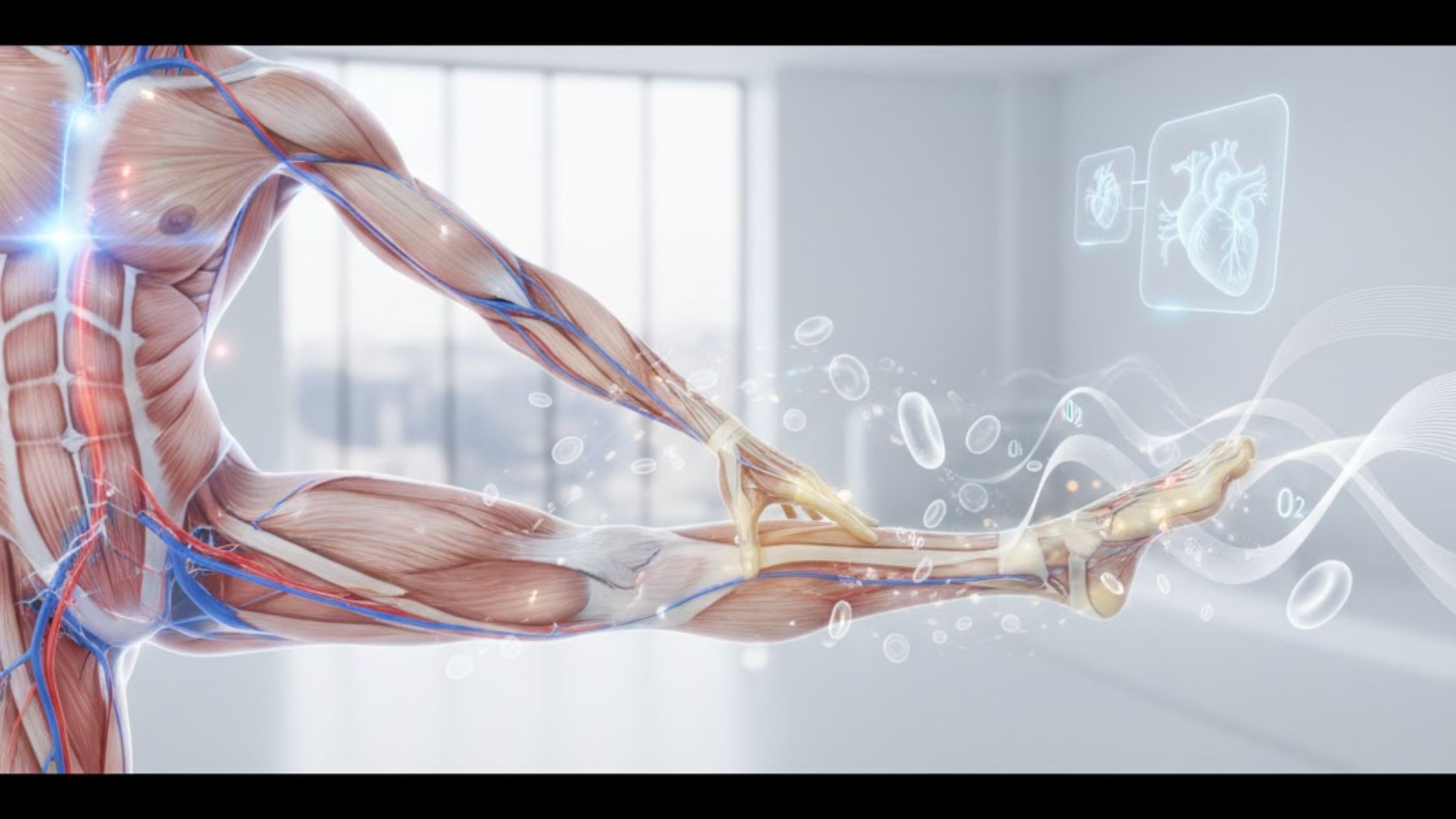
The connection between flexibility and blood flow is often underestimated, yet it is one of the most critical health benefits of a comprehensive stretching routine. The tightness in muscle tissue and fascia acts like a bottleneck on the vascular network, literally squeezing the microscopic blood vessels, or capillaries, that weave through the muscle fibers. Chronic tension restricts this essential highway of life, reducing the delivery of oxygen and nutrients.
Professional Assisted Stretch Therapy directly targets this vascular bottleneck. By systematically lengthening the muscles and releasing deep fascial tension, the therapist removes the physical compression on the capillaries and larger blood vessels. This immediate release allows the vessels to dilate more fully, a process known as vasodilation, resulting in a significantly enhanced and immediate rush of fresh, oxygenated blood into the previously restricted tissue.
Vasodilation and Enhanced Blood Flow to Muscles
The mechanical action of stretching stimulates the endothelium, the thin layer of cells lining the blood vessels. This stimulation encourages the release of nitric oxide, a powerful signaling molecule that causes the surrounding smooth muscle in the vessel walls to relax and widen. This process of vasodilation is the key to achieving improved circulation in the area. When the therapist guides the limb through a stretch and then releases it, the resulting “flushing” effect is profound, dramatically increasing the flow of oxygen and vital nutrients like glucose and amino acids required for cellular repair.
This surge of oxygenated blood has a far-reaching impact. Improved vascular activity acts not only as a delivery service but also as a powerful anti-inflammatory agent. By ensuring optimal nutrient flow to areas that were previously starved, the body’s natural healing processes are turbocharged. Consistent deep stretching is a highly effective way to achieve improved blood flow stretching, which is essential for systemic health and tissue integrity across the entire musculoskeletal system, from major muscle groups to the smallest tendons and ligaments. This focus on maximizing blood exchange is a hallmark of the structured approach we take at Fuel Health & Wellness, ensuring every stretch is optimized for physiological gain. The benefits of this enhanced circulation are particularly important for active individuals who place high demands on their musculature.
For those who rely on their bodies for peak performance, incorporating a precise stretching routine is non-negotiable. Our program of Assisted Stretching for Athletes and Active Lifestyles focuses on pre- and post-event stretching to minimize downtime and maximize readiness. This targeted approach addresses the specific needs of different sports, ensuring that the muscles used most heavily—from the hip flexors in cyclists to the shoulder girdle in swimmers—receive focused circulatory support.
The Essential Role of Venous Return and Capillary Density
While arterial blood delivery is crucial, the efficiency of venous return—the process of returning deoxygenated blood and waste back to the heart—is equally vital. Tight muscles hinder this return by reducing the mechanical “pump” action that muscles provide to veins, many of which rely on surrounding muscle contraction to move blood against gravity.
Assisted stretching acts as an external muscular pump. As the therapist lengthens and releases the muscle through various ranges of motion, they actively facilitate the squeezing and relaxation cycle necessary for optimal venous return. Over time, regular stretching is even hypothesized to potentially contribute to capillarization, which is the formation of new capillaries, further increasing the sheer surface area available for oxygen and nutrient exchange within the muscle belly. This increased capillary density is fundamental to long-term muscle endurance and health, particularly in older adults and those with reduced mobility.
The Deep Detox: Lymphatic Drainage Therapy and Metabolic Cleanup
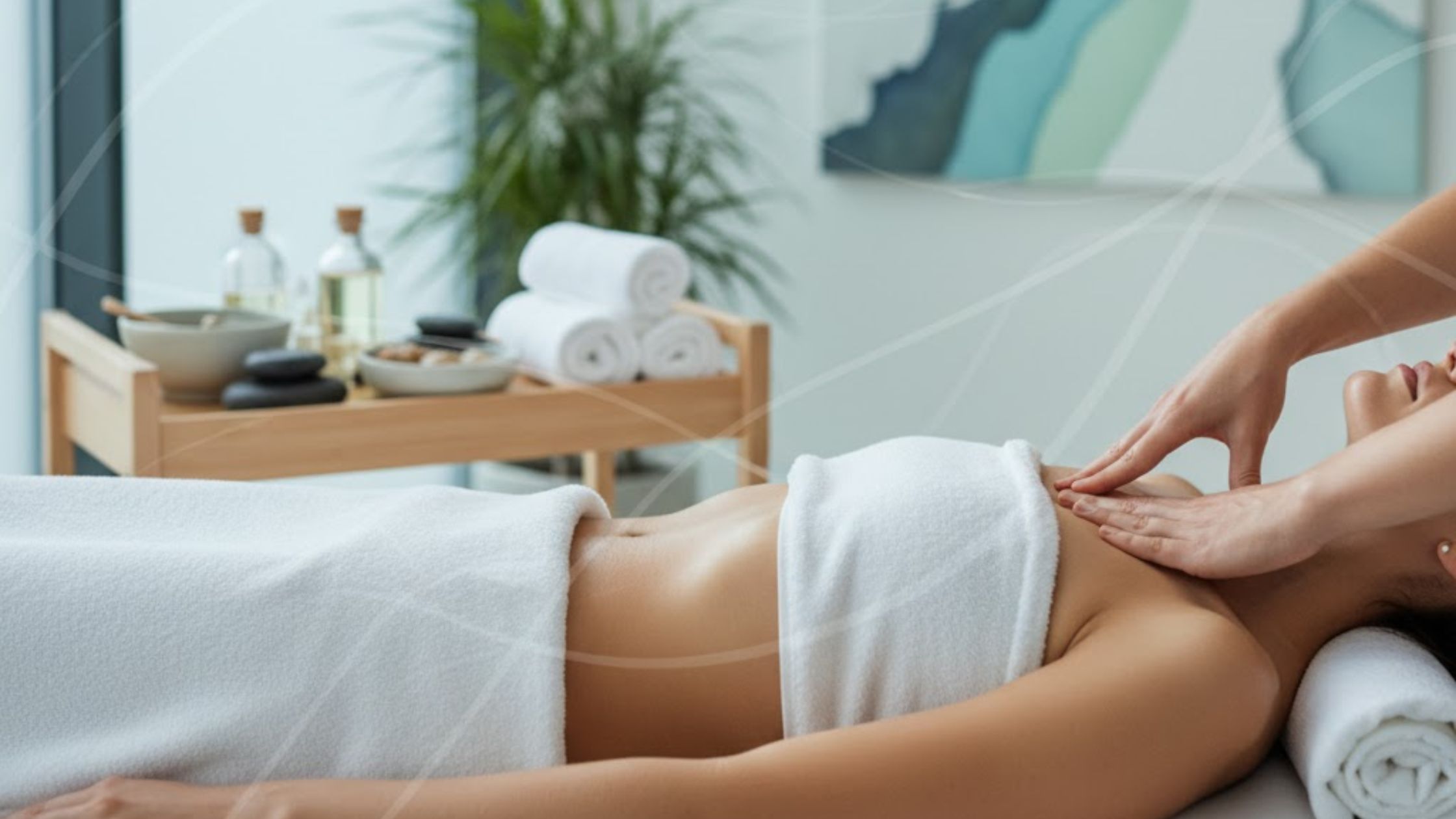
The detoxification function of assisted stretching is inextricably linked to its circulatory benefits, but it also engages the lymphatic system—the body’s silent clean-up crew. Unlike the circulatory system, which has the heart as a pump, the lymphatic system relies entirely on muscle movement and external pressure to move lymph fluid, which carries cellular waste, toxins, and immune cells. In a sedentary lifestyle or in muscles locked by residual tension, this system stagnates, leading to fluid retention, swelling, and a buildup of metabolic waste in the interstitial spaces.
The gentle, manual manipulation provided during assisted stretching acts as a highly effective form of lymphatic drainage therapy. The therapist guides the limbs and joints through fluid motions that physically compress and decompress the muscle groups, essentially massaging the lymph fluid along its pathways toward the lymph nodes for filtration and eventual elimination. This is a critical component of post-workout recovery.
Flushing Out Lactic Acid and Metabolic Byproducts
During intense exercise, the body produces metabolic byproducts, most famously lactic acid. While lactic acid is not solely responsible for all post-workout soreness, its accumulation, along with other waste products like hydrogen ions, contributes significantly to muscle fatigue and the sensation of burn. If these byproducts are not quickly cleared from the muscle tissue, they prolong recovery and intensify delayed onset muscle soreness (DOMS).
The circulatory surge achieved through deep, controlled stretching is the body’s most efficient way to flush these components out. The high volume of fresh blood entering the muscle helps to dilute and carry away the accumulated lactic acid and other waste materials via the venous and lymphatic systems. This rapid cleanup dramatically shortens the recovery period and allows for faster restoration of muscle pH balance.
This efficient removal of waste is not only essential for athletes but for anyone experiencing chronic muscle stiffness. Tense muscles can trap these byproducts even without recent intense exercise. The mechanical lengthening and release characteristic of Assisted Stretch Therapy provides the necessary physical push to ensure these lingering toxins are moved out, delivering genuine muscle oxygenation benefits that reduce chronic achiness and improve overall tissue health. The result is a profound, deep-tissue clean that revitalizes the musculature from the cellular level outward.
The Management of Delayed Onset Muscle Soreness (DOMS)
Delayed Onset Muscle Soreness, the pain and stiffness felt days after intense or unaccustomed exercise, is caused by microscopic tears in the muscle fibers and the resulting inflammatory response. While stretching cannot prevent the initial tear, its role in managing DOMS is crucial for accelerated recovery.
By dramatically increasing blood flow, assisted stretching delivers essential immune cells and repair-focused proteins to the damaged area while simultaneously removing inflammatory mediators and cellular debris. This dual action mitigates the severity and duration of the inflammatory phase, allowing the muscle fibers to begin the rebuilding process sooner. Furthermore, the light lengthening helps to realign the new collagen fibers forming during the repair process, contributing to a stronger, more organized healing outcome.
Regularly integrating stretch therapy into a fitness program is an excellent proactive strategy for optimizing muscle health. The comprehensive nature of the stretch sessions performed by our specialists means we can address micro-traumas and tightness before they escalate into larger issues. This proactive care ensures that whether you’re a casual gym-goer or a dedicated marathoner, your muscles are recovering as quickly and completely as possible, allowing you to sustain your training intensity without the heavy burden of persistent muscle fatigue.
Beyond Flexibility: Neurological and Structural Benefits
While the circulatory and detox benefits are transformative, Assisted Stretch Therapy offers profound structural and neurological advantages that impact everything from mood regulation to lifelong postural health. The work done in a stretch session goes directly into the relationship between the body’s physical structure and its communication network—the nervous system.
Activating the Parasympathetic Nervous System
Stress is a physical condition. When the body is under chronic psychological or physical stress, the sympathetic nervous system (fight-or-flight) is dominant, leading to elevated cortisol levels, constricted blood vessels, and perpetually tense muscles. Assisted stretching offers a powerful antidote. The slow, controlled nature of the movements, combined with the therapist’s coaching on deep, diaphragmatic breathing, actively signals safety to the brain.
This activation of the vagus nerve and the parasympathetic nervous system (rest-and-digest) is where true relaxation begins. As the nervous system settles, there is a physical reduction in residual muscle tension, blood pressure decreases, and the body initiates repair. Furthermore, this relaxed state encourages the release of mood-boosting neurotransmitters, particularly serotonin, which helps alleviate stress and promotes a profound sense of well-being and mental clarity that lasts long after the session is over.
Releasing Fascial Adhesions and Restoring Tissue Elasticity
Fascia is the dense, web-like connective tissue that encases every muscle, bone, and organ in the body. When we experience injury, repetitive strain, or chronic tension, the fascial layers can become sticky, rigid, and adhered, leading to restrictions that pull joints out of alignment and restrict movement far more than muscle tightness alone. These fascial adhesions are notorious sources of chronic, diffuse pain.
The deep, sustained pressure and specific shear force that a trained therapist can apply is essential for the effective, long-term release of these adhesions. By stabilizing one part of the body while moving another, they can target and lengthen fascial lines that are impossible to reach in self-stretching. Restoring the tissue’s natural elasticity not only improves mobility but also enhances the overall communication within the musculoskeletal system. This targeted release of stiffness is key to achieving true structural balance and fluidity in movement.
Achieving and maintaining proper structural alignment is central to both minimizing pain and maximizing performance, and consistent therapy is required to overcome decades of poor habits. Our specialized focus on correcting these physical imbalances is why we prioritize addressing the entire kinetic chain. We offer programs focused specifically on the profound Posture Benefits of Assisted Stretch Therapy to help clients stand taller, move more efficiently, and reduce the chronic strain associated with hunching and misalignment. This foundational work transforms the way you carry yourself through the world.
Targeted Applications for Performance and Recovery
The strategic application of Assisted Stretch Therapy makes it a cornerstone of both preventative health and post-injury management. For athletes, the benefits are clear: marginal gains in flexibility translate directly to increased power, speed, and endurance. For those recovering from injury, it provides a safe, guided path back to full function.
Speeding Up Healing: The Role of Assisted Stretch Therapy in Sports Injury Recovery
When recovering from a musculoskeletal injury, the last thing a person should do is aggressively stretch. Yet, controlled, passive movement is essential for preventing scar tissue from forming restrictive bonds. This is precisely where professional assistance is invaluable. A therapist can safely introduce precise range-of-motion work to the injured area, ensuring that the healing tissue is gently lengthened and organized without re-injury. This is a delicate balance of providing therapeutic stress without causing pain.
This careful application of movement, coupled with the enhanced circulation, ensures that the rebuilding blocks get to where they are needed most. By reducing inflammation and promoting nutrient delivery, stretch therapy plays a definitive Role of Assisted Stretch Therapy in Sports Injury Recovery by supporting muscle remodeling and accelerating the return to play. Furthermore, the therapist can work on surrounding, compensatory muscle groups that become tight from overuse as the body protects the injured site.
The preventative aspect of this specialized care cannot be overstated. By maintaining balanced muscle length and joint mobility, we significantly reduce the likelihood of tears, strains, and overuse injuries before they even begin. Runners, in particular, benefit from specific attention to their hip flexors, hamstrings, and calves, which are constantly subjected to repetitive, high-impact forces. We have developed specialized protocols targeting the demands of distance running. Our focused program, Injury Prevention for Runners with Stretch Therapy, is designed to iron out the imbalances common to this discipline, helping you log miles safely and pain-free.
A Comparative Look at Stretching Modalities
| Stretching Modality | Mechanism of Action | Effectiveness Level | Best For |
| Self-Static | Lengthening muscle to the point of tension and holding. | Moderate, limited by stretch reflex. | Basic daily maintenance. |
| Self-Dynamic | Controlled movement through a range of motion. | Good for pre-exercise warm-up. | Preparing muscles for activity. |
| Assisted Static | Therapist stabilizes and takes joint to maximum comfortable length. | High, bypasses some reflex barriers. | Post-workout recovery, general stiffness. |
| PNF/Active Assisted | Utilizes muscle contraction and nervous system relaxation. | Highest for rapid ROM gains. | Athletes, injury rehabilitation, severe tightness. |
| Myofascial Release | Sustained pressure on fascia to release adhesions. | Excellent for addressing structural issues. | Chronic pain, postural correction. |
Understanding the PNF vs. Traditional Assisted Approaches
While the entire field falls under the umbrella of assisted stretching, it’s important to understand the distinctions between techniques used by a professional. Traditional assisted stretching relies primarily on the therapist manually taking the joint through its full available range, holding the muscle at its end point, and gently pushing for a deeper extension (passive stretching). This is highly effective for general relaxation and increasing baseline flexibility.
However, PNF, which is often integrated into an assisted session, is a specialized, interactive form. It requires the client to actively engage by pushing back against the therapist’s resistance. This engagement is the physiological key to triggering the Golgi Tendon Organ (GTO), leading to the profound, temporary muscle relaxation necessary for maximum gain. We delve into the nuances of these techniques in our detailed comparison. You can learn more about the scientific basis of each method on our page discussing PNF Stretching vs. Traditional Assisted Stretch Therapy. The therapist chooses the technique based on the client’s current muscle state, pain level, and overall goals.
The Restorative Power of Stress Reduction and Sleep
The benefits of Assisted Stretch Therapy are not confined to the physical realm; they extend deeply into the systemic processes that govern overall health and recovery, most notably stress management and sleep quality. Tight muscles are not just an aesthetic or athletic issue; they are a sign of accumulated physical and mental strain, which manifests as a heightened sympathetic nervous response.
By guiding the body into deep relaxation, stretch therapy directly addresses the cycle of stress and tension. The gentle, rhythmic nature of the session, combined with focused breathing, acts as a powerful cue for the body to switch from “fight or flight” to “rest and digest.” This physiological shift reduces circulating stress hormones like cortisol and lowers the heart rate. The deep muscle release achieved then removes the physical manifestation of that stress—the knots, stiffness, and chronic tension held in the neck, shoulders, and hips.
The cumulative effect of reduced muscle tension and nervous system activation is the creation of an ideal internal environment for rest. When the body is physically relaxed and the mind is calm, the transition to deep, restorative sleep becomes much easier. This is far more beneficial than relying on sleep aids, as the stretching addresses the physical root causes of restlessness and tension-related insomnia. We explore this crucial connection in depth. You can read more about the dramatic improvement in sleep health on our dedicated page on the Better Sleep Benefits of Assisted Stretch Therapy.
For individuals managing chronic pain conditions, which often interfere severely with sleep and daily function, assisted stretching offers a non-pharmacological, low-impact intervention. Conditions like fibromyalgia, arthritis, or back pain can make self-stretching dangerous or impossible, as the risk of overdoing it is high. A trained professional, however, provides a safe, controlled environment. They understand contraindications and necessary modifications, ensuring the stretch is therapeutic, not harmful. The pain-relieving effects of increased circulation and reduced muscle guarding allow for gentle movement and improved functionality without causing flare-ups. This makes it one of the most effective and Safe Stretching Options for People with Chronic Pain, providing a path to improved mobility and decreased reliance on passive coping mechanisms. We believe wholeheartedly in the therapeutic potential of this work, which is why Fuel Health & Wellness focuses on personalized protocols that respect individual limits while still pushing for progress.
Getting Started with Assisted Stretch Therapy
Embarking on a routine of professional stretch therapy is a commitment to optimizing your body’s operating system. It begins with a comprehensive assessment of your current range of motion, identifying existing muscle imbalances, and discussing your specific goals—whether they involve athletic performance, chronic pain relief, or simply moving through daily life with greater ease. The personalized session is where the magic happens, but the relationship with your specialist ensures the long-term success of the program.
At Fuel Health & Wellness, we pride ourselves on having highly trained and certified stretch specialists who possess an intimate knowledge of anatomy, neuromuscular science, and injury protocols. Our meet the team page showcases the expertise and dedication of the individuals who will be guiding you through this transformative process. We ensure that every therapist understands the intricate relationship between the muscular, skeletal, and nervous systems, which is paramount to delivering safe and effective assisted stretching.
We understand that committing to a new wellness routine requires trust and convenience. That’s why we make the process as straightforward as possible, from initial consultation to ongoing maintenance. If you are ready to experience the benefits of deep tissue detoxification, rapid recovery, and a significant boost to your overall mobility and circulation, the next step is simple. Take the first step toward peak physical function and vitality today and contact us to schedule your introductory session. We are committed to empowering your body to move, recover, and live better than ever before. We invite you to learn more about our philosophy and services at Fuel Health & Wellness.
Frequently Asked Questions (FAQs) About Assisted Stretch Therapy
How often should I get stretched?
The ideal frequency for Assisted Stretch Therapy depends heavily on your individual lifestyle, activity level, and goals. For competitive athletes or individuals managing chronic, severe tension, two sessions per week may be beneficial initially. For general wellness, mobility maintenance, and managing a sedentary lifestyle, one session per week is often recommended to sustain gains and prevent the return of tightness. Your stretch specialist will establish a personalized treatment plan based on your body’s specific needs and response to therapy.
What should I wear to my assisted stretching appointment?
The most important thing to wear is loose, comfortable, and breathable athletic clothing. Think shorts, yoga pants, leggings, or loose-fitting track pants, and a T-shirt or tank top. The clothing must allow your limbs to move freely through their full range of motion without restriction or binding. Avoid tight jeans, belts, or clothing with stiff buttons or zippers, as these can interfere with the therapist’s ability to manipulate your body and can cause discomfort during deep stretching.
Is assisted stretching painful?
Assisted stretching should never be painful. While you will feel a deep, intense stretch that may cause mild discomfort or a sensation of “good tension,” the process is carefully controlled by the therapist. Communication is key; the therapist will constantly check in with you to ensure the stretch remains within your therapeutic tolerance, pushing just to the point of restriction, not injury. If you experience sharp, shooting, or radiating pain, you should immediately inform your therapist so they can adjust the movement.
How long does it take to see results from Assisted Stretch Therapy?
Many clients experience immediate benefits, often reporting that they feel “taller,” lighter, and more fluid in their movements right after their very first session. Gains in range of motion can be measurable and instantaneous due to the neurological deactivation of the stretch reflex. However, for long-term, lasting structural and flexibility improvements, consistency is essential. Significant, sustainable changes in chronic tension, posture, and systemic circulation typically become noticeable and integrated into daily life after 6 to 8 weeks of regular, consistent therapy.
What qualifications do stretch therapists have?
While professional assisted stretching is a specialized field, the best practitioners typically hold certifications or backgrounds in areas like massage therapy, physical therapy assistance, athletic training, exercise science, or corrective exercise. Furthermore, reputable studios like Fuel Health & Wellness invest heavily in proprietary, hands-on training to ensure their specialists are experts in the specific PNF, myofascial release, and passive stretching techniques required to safely and effectively work with the neuromuscular system. Always seek out professionals with specialized training in assisted modalities.
Conclusion: The Ultimate Investment in Physiological Health
The journey toward optimal health is defined by the efficiency of your internal systems—how well you move, how quickly you recover, and how effectively your body cleanses itself of the byproducts of activity and stress. By strategically leveraging the body’s own neurological safeguards, Assisted Stretch Therapy offers a comprehensive solution to these challenges, proving its worth far beyond simple flexibility gains. It is a powerful, non-invasive method for achieving substantial and measurable improvements in circulation, facilitating profound muscle detoxification by flushing out lactic acid and metabolic waste, and calming the nervous system for unparalleled stress relief.
This is more than a momentary indulgence; it is a foundational investment in your physical longevity and quality of life. At Fuel Health & Wellness, we are dedicated to unlocking this potential within every client, helping you to move more freely, recover faster, and live with less pain. By choosing professional, targeted care, you choose a pathway to a healthier, more vibrant life, supported by the deep science of neuromuscular relaxation and systemic efficiency.
